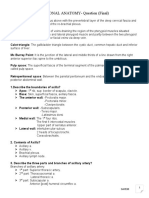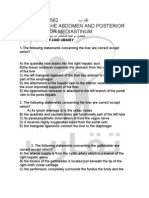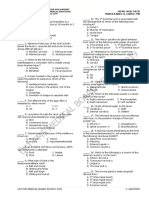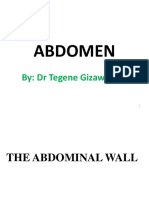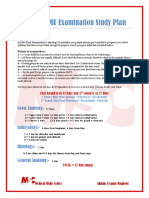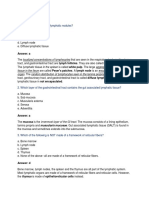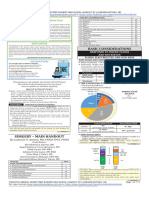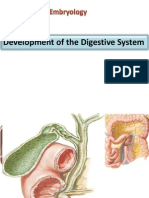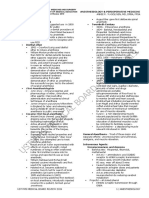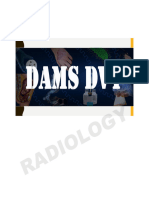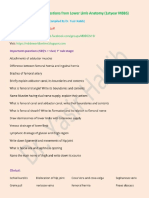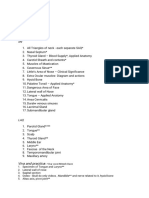Sections
o Complete Anatomy: Learn about each part of the body in detail
o Regional Anatomy: Labelling and studying each region independently
o Surface Anatomy: Focuses on the general and regional surface landmarks
o Applied Anatomy: Examines relationships between structure and function
o Physiology Study: Learn how cells, tissues, and organs function
o Histology: Learn general and systemic histology
o Histopathology Study: Learn through digital pathological slides
o Embryology Study: Learn embryonic development stages through 3D interactive simulations
o Paedology: Anatomical details of children’s development and behavioral changes
o Osteology: Learn the detailed structure of bones
o Prosections: Dissected cadaver or cadaver parts
o Animal Anatomy: Multiple animal anatomy studies
o MRI/CT Scan Visibility: Radiology imaging includes the X-Ray, USG, MRI, and CT-Scan data
o DICOM Visualizer: Visualize data in “Digital Imaging and Communications in Medicine” format
o Radiology: Annotated CT Scan/MRI clinical condition bank
o Clinical Examination: Simulations for clinical case examination
o Clinical Case Bank: Clinical/Medical case bank for better learning outcome
o Quizzes: Student-focused learning activities
o LMS: Web-based access for students
Realistic Dissection: Peel layers to know the underlying structure
Learning-focused: Loaded with practicals to enhance learning
Simplified Learning: Step-by-step instructions are given to perform dissection
Immersive Visualization: 360* visualization makes learning immersive
Closer Look: Zoom-in/Zoom-out a structure to get better clarity
Highly Interactive: Rotate organs at different angles with the touch of a finger
Better Outcome: Improve learning outcomes with better engagement
Skill Lab: Fulfils skill lab requirement
Numbers at Glance:
o 6 Cadavers
o 2 Pediatric Cadavers
o More than 100 clinical cases
o More than 10 Animal Anatomy
o More than 150 Histology Slides
o More than 60 Prosection slides
o More than 100 Histopathology Slides
o More than 5000 identifiable parts
o More than 55 Physiological Simulations
o Covers 40 weeks of Embryo Development
o More than 15 Clinical examination simulations
Functional Specifications:
1. Virtual cadaver dissection table with digital male and female cadaveric data for all levels of education. It
should comply with the Indian medical education requirement (CBME).
2. The table has fully labelled more than 5000 parts in 3D structures for the male and female anatomy.
3. More than 20 High-resolution regional anatomy models.
4. System have at least 6 full bodies including male, female, and paediatric human tissue
5. Surface anatomy showing general & regional surface body landmarks (more than 40 landmarks should be
supported).
6. Anatomy study as per CBME anatomy curriculum requirement including applied anatomy & Osteology.
�7. Comparative gross anatomy study of adult & paediatric body (in the same screen)
8. The system has the capability for side-by-side display with window dissection feature in male and female
real human tissue sections for comparative study.
9. Muscle and bones flexion - You can make muscle and bones movement for various regions like arms, legs,
head & neck, and more You can do flexion and movement of muscle, bones, and other anatomical
structures using a customised UI to control flexion, extension and supertension amount.
10. Animal Anatomy (including animals weighing more than 90 Kgs)
11. The Prosections section Provides dissected cadaver or cadaver parts that are studied for anatomical
details.
12. More than 60 high-resolution cadaveric prosection data.
13. Study of bones including a comparative study of paediatric and adult bones.
14. The system has a physiological simulation for Organ development, Cardiology, General physiology,
muscular movements, etc.
15. A large number of interactive physiology processes like cellular anatomy, cellular processes, Homeostasis,
Cardiovascular physiology, Gastrointestinal physiology, with detailed interactive simulations, audio
voiceovers, and activities. The simulation can be paused in between and interacted with.
16. Cardiovascular physiology to include Properties of cardiac muscle, Impulse generation & conduction,
Regional circulation, Pathophysiology and Practicals
17. System has Nerve and muscle physiology
18. The system has the study of embryos and stages of human development in detail (covering 40 weeks).
19. Embryology 3D Atlas based on real data from embryos with at least 14 stages, with visualization of all
systems, measurement tables, and the possibility to select different structures of the embryo
20. Embryology has below points included
o Foetal surgeries (Simulation)
o Genetics
o Pre-natal diagnosis ( Simulation in clinical examinations)
o Spermatogenesis and oogenesis
o Stages of Human Life (Phylogeny, Ontogeny, trimester, viability)
o Menstrual cycle stages and changes
o Fertilization process, barriers, effects and applied aspects
o Anatomical principles of contraceptions
o Embryological basis of twinning
o Teratogenic influences (Fertility and sterility, surrogate motherhood, social significance of sex
ratio)
o Diagnosis of pregnancy in first trimester
o Role of Teratogens
21. Male & female Pediatric body.
22. Age-wise physical development, behavioral development, and communicational development of the
paediatric body are shown in an interactive environment to study various features and developments
occurring during the growth of a paediatric body
23. Clinical examination simulations includes Endoscopy, Angiography, Angioplasty, upper GI scopy,
Colonoscopy, CABG ( Coronary artery bypass Grafting ), Joint replacement, Arthroscopy for joints,
Laparoscopy operative procedure, Robotic surgery for spine & other Organs, electrosurgical technology,
Bronchoscopy, First Aid, CPR, ERCP (endoscopic retrograde cholangiopancreatography), Pyelography.
24. Clinical cases of Congenital disorder, Genetic Disorder & clinical disorders
25. The system gives access to histological aspects of various systems
26. Contains high-resolution histology images that can be displayed in full screen and zoomed to microscopic
resolution and can annotate.
� 27. The system has the ability to view DICOM, CT, MRI, and other clinical images through external sources.
28. It does 3D reconstruction through CT scans and MRI images
29. It can visualize MRI scan data.
30. Users can interact with radiology images with tools such as measurements, angles, contrast, zoom, etc. It
has a volume rendering facility to enable 3D/4D visualization.
31. The system has functionality for navigation through 3D models and identification of structures by rotating,
panning, zooming, spinning, and other functionalities like layer-by-layer and system-wise visibility and
dissection for combination as well as individual structures.
32. The system allows users to view, dissect, highlight, label, etc. to the smallest of structures as well as a
group of structures.
33. It has Inbuilt interactive 3d animation and simulations for engaging studies.
34. It supports the creation of custom lectures.
35. System has the ability to cut in any angle or sections (Transverse, Sagittal, Coronal) and displays
simultaneously.
36. The system has tools to allow oblique cuts at any angle or position of the reconstructed images
37. Users should be able to save their work and load that data for lecture, assessment, or homework
purposes. The data can also be transferred from one table to another.
38. It has inbuilt functionality to navigate the application using both mouse, stylus, and touch input methods.
The workspace should be included in the software and be able to access it without the need for a
separate computer or monitor (built-in).
39. User should be able to label, apply colors, highlight, hide, or cut the 3D structures without an external
program or application
40. The system shows 3D structures and 2D projections on Coronal, Sagittal, and Transverse axes can be
shown on a split-screen view
41. Users should be able to view 2D sections of coronal, sagittal, and transverse without any 3D model with
the ability to measure, label and draw on them.
42. The screen interface panel can be moved across the screen space for better accessibility.
43. It has linear measurements, angles, areas, lines, ellipses, and arrows available.
44. It has 3D rendering features where users can add custom lights/colors/shadows.
45. Teachers and students can save their works and settings into presets and load them during or before
lectures.
46. Users should be able to zoom, label, measure, and draw on pathology slides in the histology library.
47. It allows the user to dissect the cadaver with a dissection guide guiding the user through the process of
dissection of the cadaver.
48. It can share the entire screen of the table using applications like Zoom, Teams, Skype, etc.
49. It contains an Educational portal with access to hundreds of cases that are already prepared and
authorized by specialists from all around the world which contain full detailing and labelling of
pathological conditions and anatomical variations
50. System can connect to an LCD projector or large external screen available in the institute without any
special attachments
Technical Specifications:
1. Unlimited user access due to on-premise deployment of the system.
2. It has a touchscreen with a screen size of 89” with up to 80 simultaneous touch points bearing a
resolution of 7680 X 2160 pixels.
3. It has 32GB DDR4 RAM.
4. It has 24GB Nvidia graphics card
5. The system operates on a Universal 110-240V power system with internal voltage regulation.
6. The system has video outputs for external projection.
� 7. The system will come with standard and extended warranties
8. The system has an on-premises deployment of the database.
Other:
The system has certification by CE /ISO / Make in India (NSIC)

